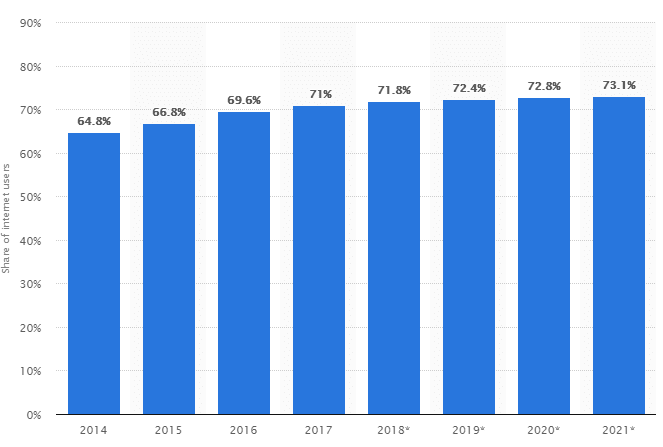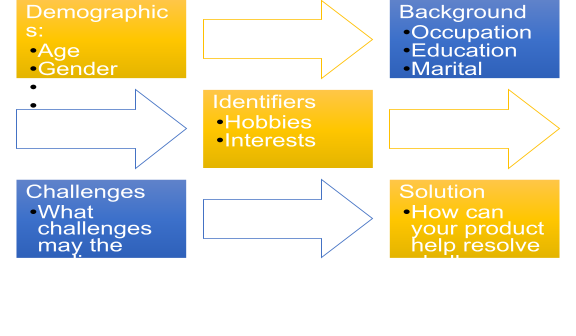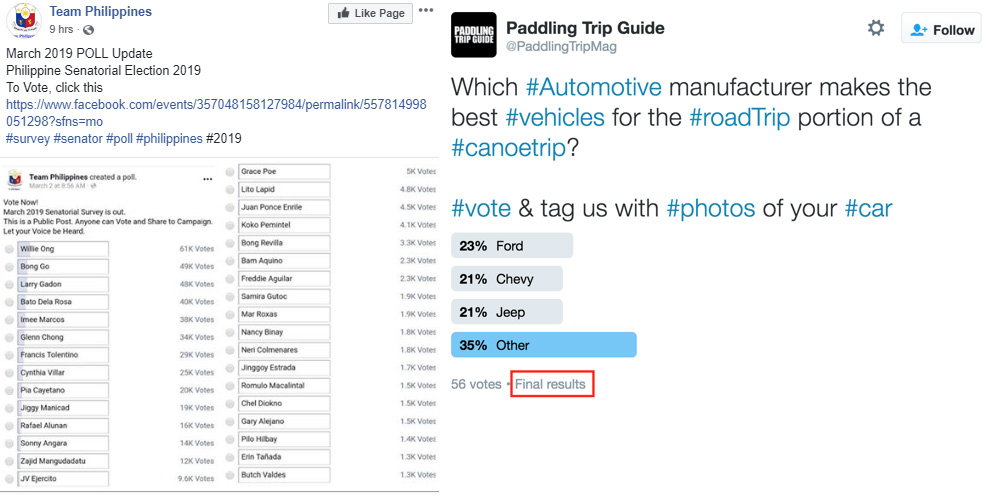Social media is no longer just a means of communication and sharing pretty pictures. Today, it’s far away from its initial function and can hardly be used solely for private purposes. Social media users also explore the platforms to find and communicate with brands, give their feedback and share their opinions about the products. Thus, social media platforms have transformed into powerful marketing tools. And, for many businesses, these platforms have become the foundation of how the company functions.
Stats support the beneficial role of social media for the marketing needs of business and its growing influence:
- Social network penetration worldwide has risen dramatically since 2014 and is expected to reach 73% of the world’s population by 2021:

Social media penetration worldwide
Image credit: DailyWireless
- By the end of 2018, it is reported that 7 of 10 people in the U.S. (or 77% of the country’s population) have at least one social media profile;
- To transfer percentage to numbers, overall social media population worldwide unites 3.4 billion active social media users;
- About 90% of social media users claim they reach out to brands or retailers via social media platforms.
Using social media for marketing is a surefire way to boost your brand’s exposure. But the biggest benefit is a constant inflow of social data, crucial for the success of a social media campaign.
Explaining the Concept of Social Data
Social data represents metadata that describes various patterns, publicly shared by social media users, including biographical data, location data, language, shared links, etc. Basically, it’s the information, collected from social media platforms that users publicly share. So, everything found on social media can be potentially used for marketing purposes. Of course, the volumes and the specificity of social data depend on the platform. Social data can be collected from, but not limited to the following features:
- URL clicks;
- comments;
- shares;
- hashtags;
- likes;
- mentions;
- analysis of the overall following base.
Social data mining includes keyword analysis as well. While previous features are studied mostly through the quantitative analysis, keyword analysis includes qualitative research of the incoming feedback. For instance, you can do keyword analysis on Yelp (which is also considered to be a social network) to see the reviews your product is getting and whether there’s something that needs to be fixed.
Benefits of Social Data
When it comes to a social media campaign, using social data on every stage of its development brings a ton of great benefits, including
- Overall social media strategy can become more targeted with the help of social data that provides marketers with detailed information about the target audience and their needs.
- Social data contributes to a more informed content strategy. One of the pillars of a successful social media campaign is high-quality personalized content that brings value to your social media followers. Collecting social data can help you determine what your content strategy will feature in your next social media campaign.
- The best thing about social data is that it is constantly updated and provides you with the real-time insights both during the pre-launch of your social media campaign and when it’s already up and running.
Social Data Limitations
Although social media can provide your brand with big data that seemingly encompasses everything, the capacity of social data can be rather limited. Social data scientists and specialists claim that, although social media users share huge volumes of information via social media platforms on a daily basis, some important bits of data can still be skipped. “It is important for the success of a social media campaign to study the target audience’s location and language to make posts more personalized”, says Peter Jefferson, a social media analyst at Flatfy. “Thus, social data scientists encounter many issues when some of the important data is not shared by social media users.” Peter shares that due to these limitations the launch of a social media campaign may be postponed.
Social data limitations and lack of important information to be used in social media campaign can result in an incomplete profile of the audience persona, which makes targeting and personalization harder, and negatively impacts content strategy. However, these inconsistencies are easily fixed with the help of a more targeted approach to social data mining. But how is social data actually applied to launching a successful social media campaign?
Let’s talk about the practical side of things.
1. Studying Target Audience with Social Data
Foundation of any social media campaign is the target audience. The better you know who you want to address, the more targeted your marketing becomes, which positively influences customer purchase decisions and overall customer experience. Social data, collected from various social media platforms, gives you extensive knowledge of who your followers are and how they see your product and your brand. Social data can be employed on all the stages of target audience research in order to create an audience persona – a universal representative of your target audience you want to focus on in your social media campaign. The following aspects are usually used to describe an audience persona:

Social data can be used at every stage of developing an audience persona. All you need to do is to combine the features of your product and research your existing social media following base to see who's most active and why. The analysis of the target audience is also necessary in order to determine which social media platform will be the primary one for the campaign. For this purpose, you can both analyze the general social media usage statistics and compare it to how your social media accounts are doing individually. Choosing the platform for a social media campaign is based on the following factors:
- age, or more commonly – generation (marketers often choose the representatives of a certain generation, e.g. millennials or Gen Z as a primary target audience);
- identifying the prevailing gender of the target audience;
- overall follower activity on a certain platform.
According to Statista, social media platforms are predominantly used by females, but the male audience doesn’t lag too far behind (73% females to 65% male respectively). However, some platforms are more preferred by women than by men. Here’s how the gender distribution of the most popular social media platforms looks like:
- On the contrary, Snapchat is a female-dominated platform, with 60% females and 38% males using this platform;
- Surprisingly, Twitter is the most male-dominated platform, with 65.5% male users and only 34.5% female users;
- LinkedIn is also a male-dominated platform, with 56% male users and 44% female users;
- Facebook is predominantly used by males, 57% to 43% respectively;
- Instagram is the only platform, where the percentage of female and male users is almost equal, with 50.3% and 49.7% respectively.
The general demographics of social media varies from platform to platform. According to the Pew Research Center, in terms of age, users aged 18-29 are the most active on social media, while users aged 50 and older tend to be rather passive. As you can see, we already covered a lot of social data just to describe who uses each social media platform and why. Combining this information along with the data about your audience personas will give you a clear understanding, which platform is better for your next social media campaign.
2. Using Social Data for Targeting and Personalization
Personalized content rules the Internet. The more personalized social media strategy is, the more attention it gets. Customers are used to getting suggestions on Instagram or Facebook, based on their interests, pages they recently visited as well as their browser search history. And social data is employed to make all of that happen. The easiest way to collect social data to create a personalized and targeted social media campaign is by doing a survey. This is also a great way to prevent any social data limitations from happening, as you can ask the respondents to share all the information that you require.
All social media platforms have surveying tools built specifically for your marketing needs. Here’s how polls look on Facebook and Twitter:

While Facebook allows its users to post extensive surveys with extra explanations, Twitter is more designed for quick surveys, as the platform has limited character count per post. If you want to create a more engaging and informal poll, you can use either Instagram or Snapchat:
Both platforms allow you to use different survey formats, post your poll using a photo or a video. The platforms do the counting for you, providing you with upcoming social data as your followers answer the questions. You can use the format of a survey to ask your followers any questions, the answers to which are necessary for a successful social media campaign. But when creating a poll, there are some aspects you need to take into account:
- If you need a personal answer, ask a direct question. This way you’ll make sure that you get more informative feedback.
- Keep your poll brief. Try to formulate short questions with precise answers. The number of answer options should be limited to 4.
- Don’t forget to thank your followers.
You can use polls and surveys to not only make your social media campaign more targeted and personalized but also at the stage of researching your target audience and creating an audience persona.
3. Social Data and Social Listening
Developing a social media campaign includes working on a social media content strategy. You need to make sure that your content is SEO-friendly and that your marketing campaign reaches as many people as possible. Creating good content for a social media campaign is possible thanks to the strategy called social listening. This strategy involves a process of monitoring conversations and interactions held on social media to identify and understand what customers are saying about the brand.
Using social listening, marketers are able to acquire valuable social data to prioritize and evaluate feedback and use these insights in the social media campaign. Your followers leave tons of feedback about your brand, either on social media or on sharing websites like Yelp. All these comments, shares and messages can help you identify what your content lacks and what they want to see.
4. Social Data and Customer Support
Even a good social media campaign cannot be successful without great customer support service. The data, collected from customer support can both improve customer service and give you valuable insights for your social media campaign. Reportedly, 67% of consumers prefer to contact a brand via social media. According to the Ambassador, 71% expect the customer support to give feedback on social media within a few minutes and would recommend a brand if a brand’s customer support service is responsive on social media.
You can take advantage of that. If you plan on launching a social media campaign, make social media platforms the primary means of communication between your brand and your customers. This will create a channel, through which you will be able to get regularly updated information from customer feedback, which can help you:
- analyze feedback that can make further improvements to your campaign;
- identify the pitfalls of your social media campaign;
- improve the work of customer support to help the tickets (incoming inquiries) get resolved faster.
5. Social Data and KPIs
Lastly, it’s necessary to highlight the importance of applying social data to keep track of your KPIs and make sure that all the goals of your campaign are met. When you start a marketing campaign, you have some key performance indicators that will shape the success of the campaign. All the social data you’ll be getting from across the platforms, from shares, likes, and hashtags as well as from your customer support, will give you valuable insights on the performance of your social media campaign. Leveraging social data can also help you prioritize content and optimize social media posting. This way you will make sure that your social media campaign is consistent and that every goal is met.
Final Ideas
Although mining social data cannot always ensure that you’ll get the answers to all the questions, it still provides you with more than enough information to help you launch a successful social media campaign. It helps you see all your successes and mishaps, it makes it easier to understand trends and helps you find out what makes your brand stand out. It is absolutely essential to have up-to-date social data at your fingertips when launching a social media campaign. Hopefully, our guide will provide you with valuable insights on how you can employ social data to launch a successful social media campaign.

